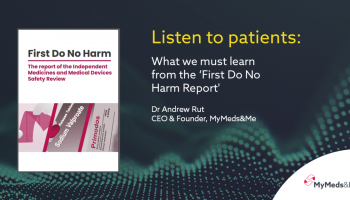On average, Serious Adverse Events (SAE's) make up 10% of all event reports from clinical trials.[i] Of these SAE’s, only 12 % contain the required information for appropriate review and reporting.[ii] Yet the current methods employed to capture adverse event data during clinical trials are outdated, and inefficient. As we get closer towards the end of a busy year for MyMedsandMe, I want to discuss the ways in which transformations in the digital world are changing the way Serious Adverse Event Data is captured during clinical trials, to make such trials more efficient, and overall safer for patients.
The current processes for the collection of SAEs and events of special interest (ESI) during clinical trials as previously shown are not providing sponsors the appropriate levels of completeness and accuracy. While these data quality issues are not unique to clinical studies, within the experimental environment of clinical research when the knowledge of safety should be evolving rapidly based on very limited numbers of reports, they have direct implications on the understanding of product profiles. Ultimately missed content, unavailable for expert adjudication by Data and Safety Monitoring Committees or pharma company experts creates ambiguity and may impair decision-making on study conduct. Improving the process of SAE/ESI capture within trials through the latest digital advances enables more robust analyses and, therefore, identification of individuals or groups carrying greater risk profiles vs. the broader population.
Alongside the qulity and understanding issues presented, the increasing number of SAEs twinned with a static approach to both pharmacovigilance (PV) data capture and processing will lead to unsustainable, escalating costs. In a time of cost-containment pressure within the pharma industry and beyond, this will lead to an unjustifiable budget environment and a demand for increased levels of control. Business process optimization reviews carried out by PV heads should undertake the following holistic review of resources and their application in three key areas:
Process: Is the clinical process for safety reporting under control?
ACTION: Ensure dedicated management control over timelines, data visibility and data classification.
Content: Is the content correct? Is your data of high quality & completeness?
ACTION: Relevant, complete data needs to be captured first time at the point of reporting.
Cost: Are your costs increasing? Are your existing processes and technologies scalable?
ACTION: A scalable, automated process should be deployed that can be managed appropriately. This provides the added benefit of follow-up costs being minimized.
Benefits of collecting AE event-driven data
Fit-for-purpose, digital safety data collection solutions provide simple, user-friendly safety data capture at initial reporter interaction. Such solutions deliver increased accuracy and improved timeliness of information, mandatory capture of data relevant to the SAE in question, a reduction in the collection of redundant data and savings in site staff time. It allows for streamlining of the query resolution process, and a reduction in the SAE reconciliation effort required before database as no redundant information is collected. It also enables the company to meet reporting deadlines with greater ease and provide a time reduction spent on unnecessary ‘follow up’ information generated from on-going eCRF updates.
Such digital solutions should include:
-
A simple and intuitive interface for data entry
-
Targeted data collection based upon in-stream data triggers related to adverse events of concern
-
Active workflow steps for Quality/Medical review
-
Auto-coding of data using MedDRA terms
-
Data imports into the safety database in (extended) E2B format.
I hope this post was informative. I am hoping to write on a more frequent basis, so if you would like to keep up to date, please subscribe to our newsletter which will also provide you with the latest insights on Reportum, industry relevant news, presentations, and more!
[i] Handen, J.S. ‘SAE Rates in Clinical Trials’. Applied Clinical Trials, May 2012
[ii] Bergvall, T. et al. ‘vigiGrade: A Tool to Identify Well-Documented Individual Case Reports and Highlight Systematic Data Quality Issues.’ Drug Safety, January 2014








